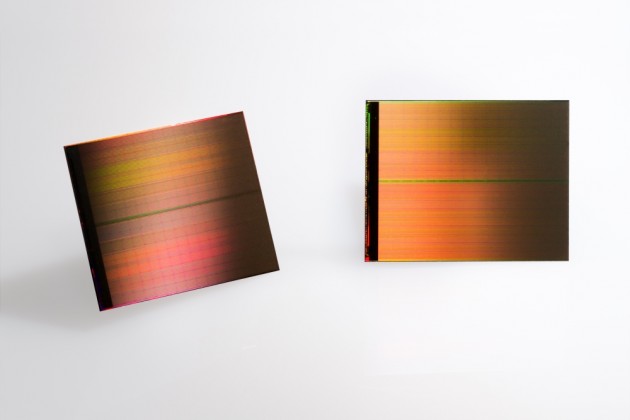
Intel unveils first new memory category in 25 years, faster-than-flash tech could speed mobile devices and computers
by Canadian Manufacturing.com Staff

3D XPoint can perform up to 1,000 times faster than traditional memory

The first new memory category in 25 years, 3D Xpoint technology wafers are currently running in production lines at Intel Micron Flash Technologies. PHOTO: Intel
SANTA CLARA, Calif.—Intel Corp. and Micron Technology have unveiled a new, non-volatile type of memory the companies say has the potential to revolutionize any device, application or service that benefits from fast access to large sets of data. Now in production, 3D XPoint technology is the first new memory category since the introduction of NAND flash – or simply flash memory – in 1989.
“For decades, the industry has searched for ways to reduce the lag time between the processor and data to allow much faster analysis,” Rob Crooke, senior vice president and general manager of Intel’s Non-Volatile Memory Solutions Group, said. “This new class of non-volatile memory achieves this goal and brings game-changing performance to memory and storage solutions.”
The ever-increasing number of connected devices and digital services is generating massive amounts of new data, but to make this data useful, it must be stored and analyzed very quickly. This creates challenges for service providers and system builders who must balance cost, power and performance trade-offs when they design memory and storage solutions. Intel says 3D XPoint technology combines the performance, density, power, non-volatility and cost advantages of all available memory technologies on the market today into one product. The technology is touted as being up to 1,000 times faster and has up to 1,000 times greater endurance than flash. It is also 10-times denser than conventional memory.
“One of the most significant hurdles in modern computing is the time it takes the processor to reach data on long-term storage,” Mark Adams, president of Micron, said. “This new class of non-volatile memory is a revolutionary technology that allows for quick access to enormous data sets and enables entirely new applications.”
As the digital world’s data footprint balloons – from 4.4 zettabytes of digital data created in 2013 to an expected 44 zettabytes by 2020, according to Intel – 3D XPoint technology will be able to turn this immense amount of data into valuable information in nanoseconds. For example, the company said, retailers may use 3D XPoint technology to more quickly identify fraud detection patterns in financial transactions, healthcare researchers could process and analyze larger data sets in real time, accelerating complex tasks such as genetic analysis and disease tracking.
The performance benefits of 3D XPoint technology could also enhance the PC experience, allowing consumers to enjoy faster interactive social media and collaboration as well as more immersive gaming experiences. The non-volatile nature of the technology also makes it a great choice for a variety of low-latency storage applications since data is not erased when the device is powered off. In this regard, the technology mirrors the capability of flash memory USB sticks, which have become ubiquitous.
Currently entering the production stage after more than a decade of research and development, Intel notes 3D XPoint technology was built from the ground up. The technology uses transistor-less cross point architecture, creating a three-dimensional checkerboard where memory cells sit at the intersection of word lines and bit lines, allowing the cells to be addressed individually. Intel says this allows data to be written and read in small sizes, leading to faster and more efficient read/write processes.
The company has not yet released any details about the product’s pricing, but it is expected to reach shelves next year.